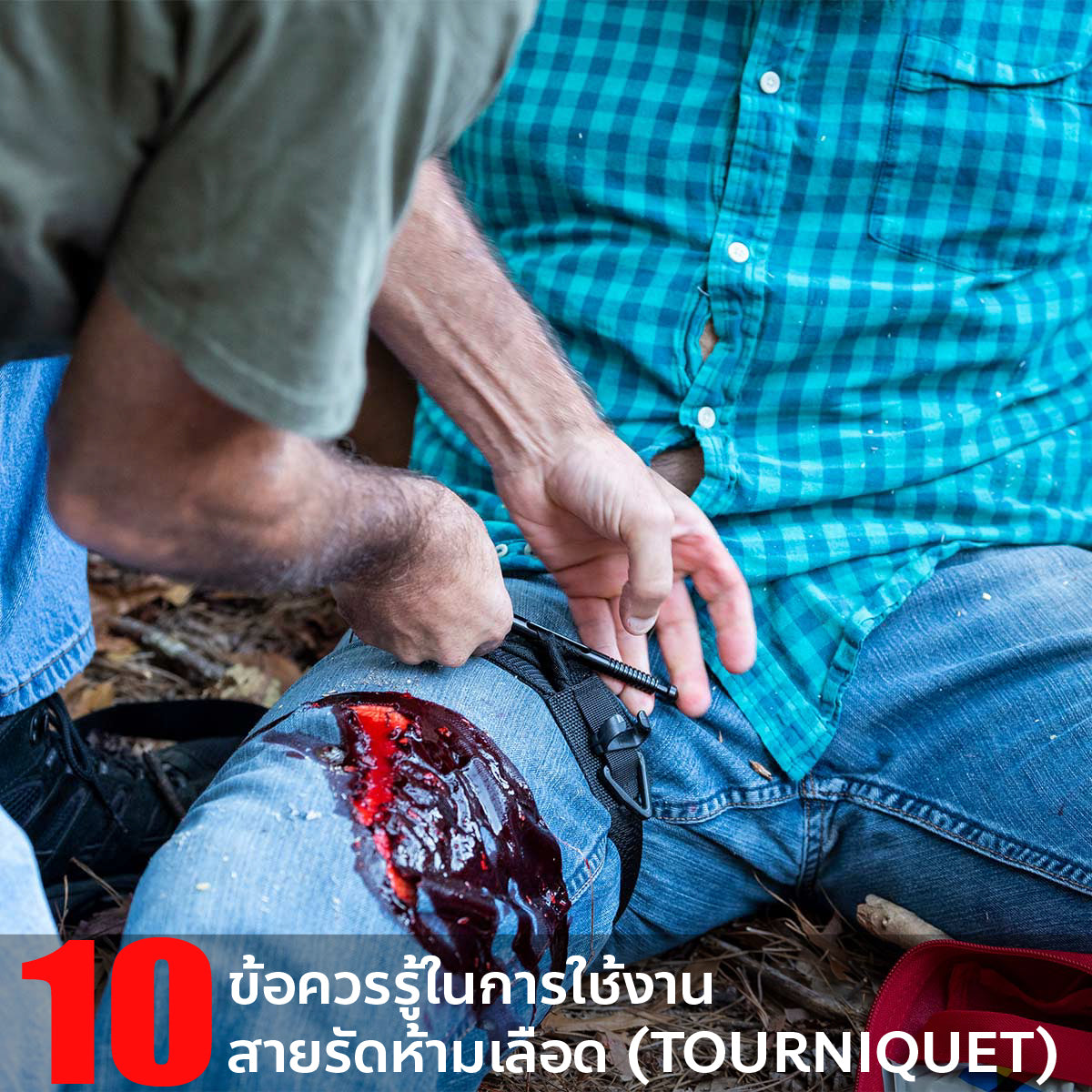10 things to know when using a tourniquet
This will help make the use of tourniquets more effective. I hope it will be useful for everyone.
1. When using, position the tourniquet.
Keep it high and tight, we call this method
"Urgent hemostatic forceps or Hasty TQs"
Which is currently another method that is in the topic
Another TCCC course Care under fire training.
2. If the wound occurs on the thigh, do not use a tourniquet to stop the bleeding.
Wrapped around the pelvic bone "iliac crest" at its highest position.
The best place to use a tourniquet is near the thigh.
( Groin area ) only and should be used in specific cases
Where the wound cannot be definitely detected
3. It sounds funny, but it is also very dangerous.
That is, be careful not to let the tourniquet squeeze the penis too.
In addition to not being able to stop bleeding effectively,
It may cause serious injury to the injured person and may lead to
Unnecessary loss of vital organs of the injured person
.
4. If more than one tourniquet is required
Only tighten the first line at a position higher than the first one. Do not loosen the old line.
Or remove the strap to re-tie it, just tie the new strap on.
(The removal of tourniquets is the responsibility of the medical staff.
(Experts or only while the injured person is in the hospital)
5. When using a tourniquet, pull the tourniquet to stop the bleeding for the first time.
It should be as tight as possible and the tension rod is helpful.
Only increase the pressure (At this point, it has been seen in training that
The trainer had a problem and was unable to stop the bleeding according to the specified criteria.
Even though the handle has been tightened many times, it was found that
It was shown that it was caused by the strap not being pulled tight enough from the beginning.)
.
6. We can keep a tourniquet on the organ for more than 2 hours.
Without any side effects on body tissues and muscles.
This can even be done during tourniquet training.
(But during training, when removing the tourniquet,
Must be performed by an experienced trainer or officer.
Only to remove the tourniquet. Students are not allowed to do so arbitrarily.)
.
7. If you are still unsure whether to use a tourniquet on an injured person?
You can use a tourniquet first. There is no need to feel sorry about it.
Because sometimes there are many cases where wounds are found but it is uncertain where they are.
And how severe are the symptoms that you are not sure if you should use TQ?
So, just use a tourniquet to stop the bleeding.
It's still better than not using it in the first place and missing out on the opportunity for medical treatment.
.
8. You can use a tourniquet where two bones meet.
Such as the lower arm or shin area.
.
9. Do not use tourniquets on joints or organ joints.
Such as knees, elbows, and various joints.
(At that point, the best advice is to use a tourniquet.
The upper arm or thigh area would be best.)
.
10. After taking the injured person to a safe place
Or if the situation is under control, it should be checked periodically to be sure.
Whether the tourniquet is still effective
Check that the strap is wrapped directly against the skin and is free of clothing or
What parts can interfere with the tourniquet?
(You may use a test by inserting three fingers.
If it cannot be inserted, it is considered to still be in good working condition, etc.)
.
Additional information: Use of tourniquet even when wearing clothing
It will be permitted only during training, but during actual practice
All clothing should be removed before applying a tourniquet.
(If it can be done at that time) to reduce the risk
Where the scraps of clothing or objects inside will make it difficult to use a tourniquet.
Not efficient
.
Additional 2: If not in a conflict or in a dangerous place
And can use a tourniquet without haste. The tourniquet can be used to stop bleeding.
2-3 inches above the wound for maximum effectiveness in stopping bleeding.
.
Article source: FB: North American Rescue
Translator: Thithat Rinchai on March 26, 2021
Compiled by: Ranakrit Sriphumma, March 26, 2021


